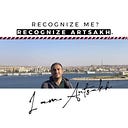The History of Rwandan Art
Rwandans used cow dung, unlike its usual use as a way of heating, cooking by drying and burning it or generating methane gas, to express their ideas. In the following lines, you will read about a unique art form.
In the early 1880s, Rwandans used dung to create distinctive "paintings" that were dominated by black, brown, and white whorls and other geometric abstractions, which are considered to be the origin of the country's art. These distinctive and natural works were incorporated into regional home decor.
Today's Rwandan arts and crafts industry offer a wide range of products that are all handcrafted, made entirely of natural materials, and dyed using non-toxic materials following the highest international quality standards.
From ceramics and basketry to traditional woodcarvings and contemporary paintings, rural Rwanda produces a wide range of traditional arts and crafts.
Imigongo artwork
This art form was on the verge of extinction in the chaos that followed the genocide, but 29 years later, as the nation experiences a cultural renaissance, imigongo is emerging as a symbol of extraordinary resiliency and ingenuity, just like Rwandans themselves.
The huts of traditional villages are decorated with bold, geometric imigongo art, and the country's finest hotels in the capital, Kigali, proudly display pieces of imigongo art on their shelves.
Traditionally, geometric designs are produced. As women artists have grown in confidence, they have begun to experiment with more modern, innovative images that convey the spirit of the Rwandan landscape, its flora, its fauna and its people.
Here is what you need to know about imigongo:
For centuries, cows have been revered in Rwanda, a small landlocked country in Eastern Africa. A subset of the breed called inyambo was allocated specifically to the kings in the 17th century. Owning a cow was a sign of wealth and high social status in this traditionally agrarian society. These majestic royal cows had long, arched horns and a stately appearance, and they were paraded through royal villages as part of elaborate ceremonies honouring the reigning king.
One of these royal parades may have given rise to the concept of imigongo. According to local legend, Prince Kakira, the son of King Kimenyi of Gisaka, invented the custom of cow dung decoration in the eastern Kibungo region, close to the Tanzanian border in the late 18th or early 19th century. Prince Kakira created the paste-like compound by combining readily available cow dung, ash, and clay. He then applied it to the hut's plain walls. After teaching local women his approach, they continued using it for generations.
Processing steps
It is made through a remarkable process that takes a plentiful material—cow dung—and transforms it into a work of art with the aid of creativity and natural dyes.
A wooden base plate, which can be as large as a mural or as small as a picture frame, serves as the foundation for all creations. To ensure that the final design is proportionate, the artist divides this plate into equal parts using banana fibres. The artist then uses charcoal to draw geometric patterns like zigzags, spirals, diamonds, or squares on the plate. Fresh cow dung mixed with ash, which kills bacteria and gets rid of odours, is used as the main medium.
This malleable, dough-like paste is manually applied by the artist, who then painstakingly uses his fingers to meticulously trace the desired pattern, resulting in a raised relief. The artwork needs about a day to air dry before being smoothed out and given a base coat of neutral ochre to ensure that the remaining colours will appear in shades that match.
Once the piece has dried, the artist paints designs on it using a straightforward palette that contains no more than four natural pigments. Black is a traditional colour, made from the ashes of banana peels, the sap of aloe (ikakarubamba), and the deadly soda apple fruit (umutobotobo). White is made from the clay mineral kaolin. Red is made from the iron-rich soil of Rwanda. Modern designs increasingly employ a wider spectrum of colours, but the traditional style still uses four or fewer colours.
#Rwana #Imigongo #Handicrafts #traditionalart #ikakarubamba #umutobotobo
#cowdung #cowdungproducts #clay #methane #methanegas #kigali
